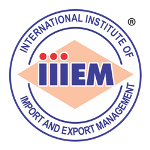What Are Non-Woven Fabrics?
Non-woven fabrics are engineered materials made by bonding fibers together through chemical, mechanical, heat, or solvent treatments, rather than weaving or knitting. This process creates a fabric with unique properties, such as high absorbency, durability, and cost-effectiveness, making it ideal for single-use medical products.
Why Non-Woven Fabrics for Medical Disposables?
- Hygiene and Sterility
Non-woven fabrics are designed for single-use, reducing the risk of cross-contamination and infections. They meet stringent sterilization standards, making them a preferred choice for disposable medical items. - Comfort and Breathability
These fabrics are lightweight and breathable, ensuring comfort for healthcare professionals and patients during extended use. - High Barrier Protection
Non-woven materials provide excellent resistance to fluids, bacteria, and particulate matter, offering critical protection in surgical and clinical environments. - Cost-Effectiveness
Compared to traditional reusable materials, non-woven fabrics are more economical due to their low manufacturing cost and disposable nature, reducing laundering and maintenance expenses.
How Non-Woven Fabrics Are Revolutionizing Medical Disposables
The healthcare industry is continually evolving, with innovations aimed at improving patient care, safety, and hygiene. One of the most transformative materials in this sector is non-woven fabric, which has revolutionized the production of medical disposables. From surgical masks to gowns, drapes, and wipes, non-woven fabrics are now indispensable in ensuring safety and efficiency in medical settings.
Applications of Non-Woven Fabrics in Medical Disposables
- Surgical Masks
Non-woven fabrics are used as the primary material for surgical masks, offering filtration efficiency and breathability to protect against airborne pathogens. - Gowns and Drapes
Disposable surgical gowns and drapes made from non-woven fabrics provide a sterile barrier, safeguarding against infections. - Wound Dressings and Bandages
The high absorbency and softness of non-woven materials make them ideal for wound care applications, promoting faster healing. - Caps and Shoe Covers
These single-use items ensure hygiene in sensitive medical environments, preventing contamination from hair and footwear. - Sanitary Wipes and Pads
Non-woven fabrics are commonly used for disposable wipes and pads, thanks to their absorbent and durable properties.
Advantages of Non-Woven Fabrics Over Traditional Textiles
- Quick Production: Non-woven fabrics can be mass-produced in a fraction of the time required for woven or knitted fabrics
- Customization: They can be tailored for specific applications, such as antibacterial or waterproof properties.
- Environmentally Friendly Options: Many non-woven fabrics are biodegradable, addressing concerns about medical waste.
Innovations Driving the Future
- Eco-Friendly Alternatives
With growing environmental concerns, manufacturers are developing biodegradable non-woven fabrics to minimize medical waste’s ecological footprint. - Nanotechnology Integration
Non-woven fabrics embedded with nanoparticles are being explored for enhanced antimicrobial properties, further improving safety standards. - Smart Non-Woven Materials
Research is underway to create smart fabrics capable of monitoring vital signs or releasing medication directly to the skin.
The End Note
Non-woven fabrics have become the backbone of the medical disposables industry, offering unparalleled benefits in hygiene, protection, and cost-efficiency. As technology advances, these materials are poised to play an even more critical role in healthcare, ensuring safer and more sustainable solutions for patients and professionals alike.
Whether it’s a surgeon relying on a sterile gown or a nurse using disposable wipes, non-woven fabrics ensure that modern medicine remains hygienic, efficient, and accessible. Truly, they are revolutionizing the way we think about medical disposables.
Thank you
